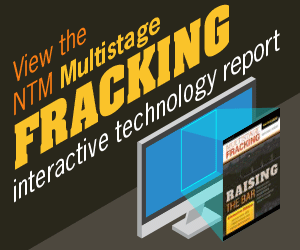An Analytic Approach: Using data management and predictive analytics to cut costs, avoid breakdowns
- Published: Thursday, 09 April 2015
- Author: Jim Bentein
If you’ve searched a travel site on the Internet, booked a hotel room or bought a book on Amazon’s website, it’s likely your search has been analyzed by a data mining technology called analytics; a powerful tool that lets companies trying to sell you their products and services determine what your future tastes and desires will be in order to better target you.
Search engine Google, which offers its web-based Google Analytics service, typifies the trend, with a data analysis tool that lets companies and others provide an easier way for potential customers to search for their sites and to better design their websites so they can quickly find the information they’re seeking, while also being able to gather information about those customers’ tastes and desires.
And while the oil and gas industry has been slow in adopting the technology, a Calgary-based executive with SAS Canada Institute, one of the leaders in analytics, says he’s convinced virtually all areas of the industry could benefit from its use, potentially saving hundreds of millions of dollars by better deploying its assets and its workforce.
“I’m an old oil and gas engineer,” says Doug Crawford, 60, who is the executive lead, oil and gas Americas, with SAS. “A lot of the people who run the [oil and gas] companies [in Canada] are my age. But if you can show someone where you can save them money and make their operations more efficient for $500,000 or $1 million, I think they would be interested.”
SAS, an acronym for Statistical Analysis System, is a software suite developed by the SAS Institute for advanced analytics, first developed at North Carolina State University in the late 1960s; it remains headquartered in that state. The Institute, now a privately owned corporation with thousands of employees worldwide, is the leader in the use of advanced analytics, business intelligence, data management and predictive analytics.
The technology has steadily advanced since then, with the development of computer power that has seen laptops exceed what mainframes could achieve when they were first developed. SAS data can be published in a variety of software formats and is now available in the cloud as well.
While it is used in virtually all industries, one of its best-known products is its enterprise financial crimes for banking technology, which involves the use of SAS technology to detect fraud, money laundering and other fraudulent transactions.
“Every time you use your credit card, you’re using an SAS code, which is part of our fraud detection framework,” Crawford says.
Crawford is a chemical engineering graduate of the University of Calgary with 32 years of industry experience, including in the offshore and oilsands with the former Gulf Canada as well as with North Dakota fracking pioneer Mission Oil and Gas, now owned by Calgary-based Crescent Point Energy. While SAS analytics is used by the oil and gas industry, Crawford says it has not adopted the SAS analytics approach as rapidly as he believes it should.
“I’m a bit surprised the folks [in the industry] in Canada aren’t more quickly adopting it,” he says. “When I joined SAS [last fall], I was astounded with the things people [at the Institute] were doing with big data.”
Shell Upstream Americas has already learned what can be done with its data, deploying SAS tools called SAS Predictive Asset Management and SAS Visual Analytics in its offshore operations.
The Predictive Asset Management technology analyses real-time data to predict possible downtime caused by defects, preventing prolonged shutdowns and optimizing maintenance cycles.
The company’s Visual Analytics technology uses advanced visualization technology to provide engineers and operations personnel with an event-based surveillance capability across all of Shell’s deepwater assets in the Gulf of Mexico and Brazil.
Tom Moroney, Shell’s deepwater technology deployment manager, described in an article posted on the SAS corporate website how the approach can help the company manage its assets. “We’re beginning to use some fairly intense statistics and we don’t want just to be looking at events but patterns and the emergence of patterns in real time,” he says.
Crawford says there are numerous other examples of the use of analytics in the oil and gas industry. One notable use was in the Netherlands’ massive Groningen gas field, the largest natural gas field in Europe, where the technology has been used to detect maintenance issues, reducing downtimes there from 28 days to just a few days, he says.
As an engineer by training, Crawford says learning how the technology works has been eye opening. “Using algorithms, [SAS computer scientists and data managers] can look at all the data and figure out the most important variable,” he says. “The more historical data you have, the more predictive you can be.”
SAS technology is already in widespread use in one aspect of the oil and gas industry, in the area of hedging, he says. “We have a number of clients in Calgary who use our BookRunner [Advanced Analytics] technology,” he says.
BookRunner uses advanced modelling functions to measure and monitor risk metrics associated with physical or financial energy assets and contracts, including value-at-risk, cash-flow-at-risk, potential future exposure, run-risk sensitivity and other factors.
Crawford says the value of hedging is obvious in today’s volatile commodity price environment. He says there are many other examples of how the company’s technology has been used to squeeze more profits out of producing oil and gas assets.
“There’s an operator in the U.S. [that he could not identify] that has thousands of wells in California,” he says. “If they can get [an additional] one-half a barrel a day from each well, it could be worth millions of dollars to them,” he says. The company put controllers on all its wells and brought that information into a central point where it can use analytics to better manage the asset.
The use of the technology has allowed the company to maximize production, reduce maintenance costs and better prevent rod failure and other equipment problems. “They also saved 30 per cent on chemical costs while increasing production by 10 per cent,” he says.
Another area where SAS technology was used was in the Early Warning project on the Ekofisk 2/4 (EKOJ) oil platform operated by ConocoPhillips in the North Sea. The EKOJ receives streams of information from multiple platforms, which is analyzed using SAS technology to form predictive rules to diagnose possible performance issues before they occur. In that case, he says maintenance costs were cut dramatically and there was a five per cent improvement in production.
Crawford is convinced that the use of his firm’s technology in the Canadian oilpatch, particularly in the oilsands, could save companies hundreds of millions of dollars. He provides one recent example of how analytics could have saved an oilsands producer millions of dollars.
“There was the [Imperial Oil] Kearl oilsands mining project, where a problem with a crusher caused a plant shutdown, preventing the production of 92,000 bbls/d and causing the company’s share price to decline,” he says. “Predictive maintenance technology would have helped Imperial avoid that.”
The problem with the ore crusher occurred last fall, shortly after the start-up of the first phase of the project. Production was shut down due to mechanical issues that caused vibrations in the ore crusher unit. It took several weeks to repair the malfunction.
The ore crusher is part of a process to remove clay particles and water from bitumen so an upgrader isn’t required to produce marketable bitumen. Imperial, which has completed the second phase of the Kearl project, tried to assure nervous investors it had learned its lesson, and the same problem would not be encountered with the newest phase.
Crawford says some producers in Canada are starting to embrace his firm’s technology. “I think the opportunity in the oil and gas space is extraordinary.”
He says one existing opportunity is in the steam assisted gravity drainage (SAGD) area.
SAS is already working with some SAGD operators, though the company could not yet reveal which ones, and Crawford says he can see a number of areas where analytics can be used. One is in better determining where core holes need to be drilled. “If you input all of the data and analyze it, you can better map where to drill the wells,” he says.
The technology can also be used to optimize steam injection, he says. “We hope to create a surrogate reservoir model, working with our computer modelling group. Because there are 150 different models and they are complex, it can take months now. But we’re trying to compress that, using the SAS approach.”
Another area in the oilsands and in the downstream sector where Crawford sees great potential is in the maintenance, repair and operations (MRO) space—also known as shutdowns and turnarounds.
“We believe operators could better schedule MRO work by using analytics to create critical pathways,” he says. This could sharply reduce maintenance and upkeep costs.
Crawford argues that manufacturers of critical equipment are “ultra-conservative” when they suggest maintenance schedules, which can drive up costs. Using analytics would create a more realistic MRO regimen.
“Preventive maintenance is what everyone does, but our technology can help them do predictive maintenance,” he says.
Crawford notes an independent study by the U.S. Department of Energy in its Operations and Maintenance Best Practices Guide showed that predictive analytics can “virtually eliminate catastrophic failures” and can reduce unplanned downtime to three to four per cent, as opposed to 10–18 per cent without its use.
That same study showed that in industrial settings there is a 25–30 per cent reduction in maintenance costs, a 70–75 per cent elimination of breakdowns, a 35–40 per cent reduction in downtime and a 20–25 per cent increase in production.
CONTACT FOR MORE INFORMATION
Doug Crawford, SAS Canada
Tel: 403-802-4452
Email: [email protected]
-NTM-





